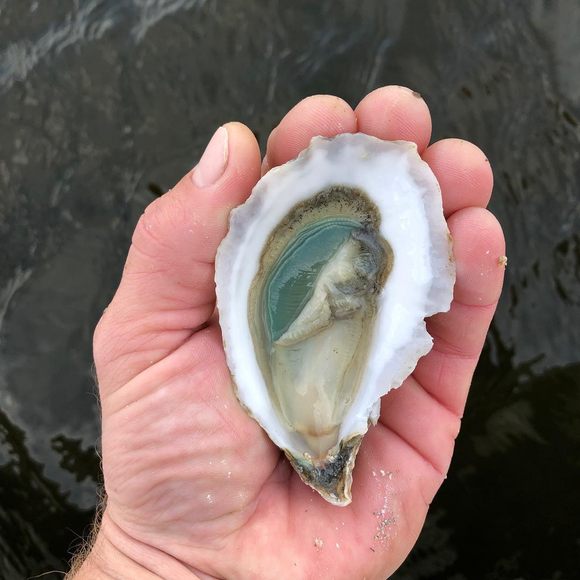Meats & Animal Products
Green Gill Oysters
North Carolina's seasonal delicacy is brought to you by algae.
In North Carolina’s waterways, seasonal blooms of Haslea ostrearia, a type of microalgae, turn oysters a vibrant shade of blue-green. For harvesters who find them, or work in beds rich with the algae, they are a treat: an oyster whose taste, described as especially briny and delicious by those in the industry, is as unique as its coloring.
For decades, though, harvesters and restaurants had to throw out their green gill oysters, or sell them at a steep discount. Green seafood was just too much of a leap for diners—even though green oysters known as fines de claires, which are harvested from clay ponds in Marennes-Oléron, France, where levels of Haslea ostrearia are carefully maintained, have long been considered local delicacies. To gain similar respect for North Carolina’s green oysters, harvesters and chefs have engaged in robust education efforts, which are paying off as restaurants successfully give the oysters top billing and fine-dining establishments outside the state now seek them out. (Although some diners still order them as a dare.)
The successful marketing of green gill oysters is a bit bittersweet, since the increased demand has made the oyster, which is available only in the spring, harder to find. But most local chefs are pleased that they’re being served to eager customers instead of thrown back into the sea.
Where to Try It
-
Located inside the Umstead Hotel and Spa, Herons focuses on seasonal, whimsical, gastronomic fare.
-
Locals Oyster Bar Website
500 E Davie St , Raleigh, North Carolina, 27601, United StatesHoused inside Raleigh’s hip Transfer Co. Food Hall, Locals Oyster Bar focuses on just what its name implies.














